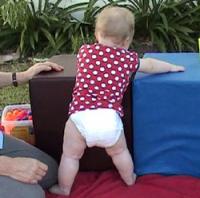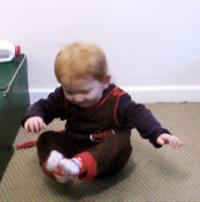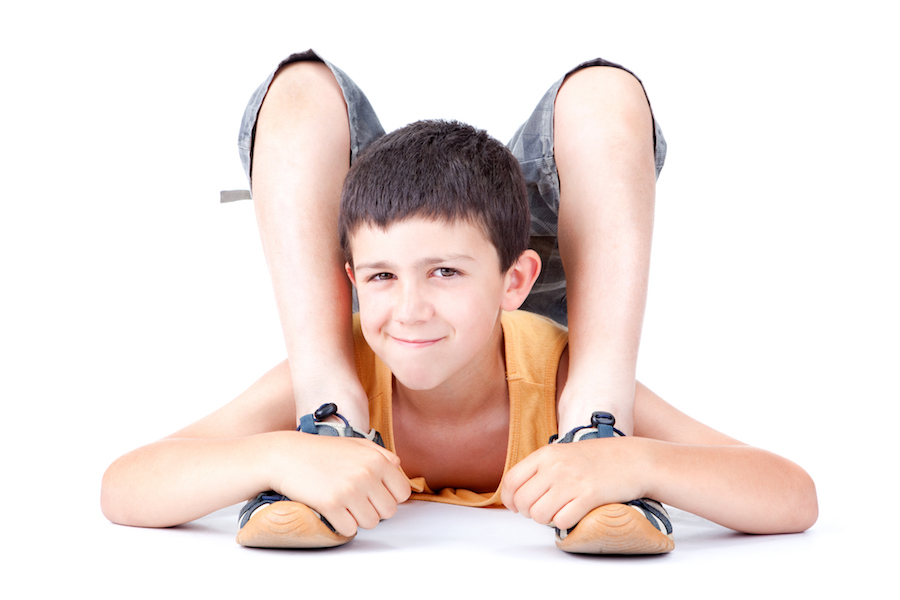hypermobility in babies arms
Add one point for each arm Passive hyperextension of. It can sometimes be tied to specific causes such as prematurity.

How Hypermobility And Low Muscle Tone Affect Your Infant S Development Low Muscle Tone Pediatric Physical Therapy Muscle Tone
For most children hypermobility affects just the joints.

. Right knee bending backward. Because the baby does not move the arm at all the injury is usually picked up early and the baby is referred to a specialist. 651-290-8707 Refer a Patient.
In infants with joint hypermobility the connective tissue that holds the muscles together and connects the muscles to the bones via the tendons is very pliable. However some children have a condition called Joint Hypermobility Syndrome or JHS. It occurs on average in 30 of the child population being more common in girls than in boys in a ratio of 3 to 1.
Muscle tone or strength. This happens when the connective tissue which makes up the joint structures capsule and ligaments is more compliant easier to stretch than usual. Low muscle tone and joint hypermobility.
Joint hypermobility syndrome is most common in children and young people. Joint hypermobility is thought to be very common particularly in children and young people. Joint hypermobility in babies and children is even more common and usually causes no problems.
Seems that the way in which hypermobility affects children as they grow varies enormously. Infant hypermobility is a common asymptomatic condition in children under the age of 5 that causes joints to move outside their normal limits. HSDs are the diagnosis where the main or only symptoms are exercise-related pain together with joint hypermobility.
4 points hypermobility likely. The usual tightness of the hip and knee muscles is absent and the the hips and. It occurs when collagen levels in tendons and ligaments are altered making the fibers thinner and less stiff.
Autism Joint Hypermobility JH and Hypermobility-Related Disorders HRDs Current clinical descriptions of young children with autism include hypotonia joint laxity clumsiness apraxia and toe walking as common findings Interestingly similar features have been also described in people with HRDs 2628To the best of our knowledge the first. In most instances the low muscle tone is linked to joint hypermobility. This is called benign hypermobility syndrome since the only symptom is hypermobile joints.
Hypermobility syndrome HMS is diagnosed using the Beighton score and Brighton criteria. In many cases the joints become stiffer with age although joint hypermobility and its associated symptoms can continue into adult life. Left elbow bending backward.
Thats why its also called floppy infant syndrome. Some estimates suggest that around one in every five people in the UK may have hypermobile joints. Limb stiffness is the most common symptom of spastic-type cerebral palsy a disorder of movement or coordination diagnosed in about 10000 US.
It can be caused by. Hypermobility means a persons joints move beyond a normal range of motion. I am slightly hypermobile especially arms wrists and fingers which all bend in horrible ways and my sister is much worse although without muscle tone problems so Im keeping an eye on my DCs for any genetic link but neither show any signs.
This affects the sensitivity of the stretch receptors and the muscles readiness for action. In the clinic we measure joints in degrees and usually joints like elbows and knees are supposed to straighten to make the arm one line and the leg one line which would measure to be 180 degrees. 4 points and pain in 4 or more joints for at least 3 months joint hypermobility syndrome likely.
In addition to hypermobile joints a child with JHS may also have. It is extremely common in children having being reported in 25 to 50 of those younger than 10 years of age. Bend a little finger back more than 90 degrees.
The pain is more common in the legs such as the calf or thigh muscles. This is quite common and is considered a normal variant of development. It is sometimes referred to as being double jointed and is quite common about 1 in 10 people are hypermobile.
The older you are the less likely it is you will be hypermobile. The Beighton score is measured by adding 1 point for each of the following. However for some people hypermobility causes joint pain joint and ligament injuries tiredness fatigue bowel issues and other symptoms.
Children inherently have a greater range of joint motion than adults the prevalence of hypermobility as defined by several criteria varying in different populations from 5 to 30 1 5This variation probably represents ethnic differences but also the different ages at which joint examinations were undertaken and the different populations chosen for study. Right elbow bending backward. The first is Erbs Palsy an injury to the nerves going to the arm that occurs during birth.
Many children and adults will have one or more double joints. It affects people assigned female at birth AFAB and people of Asian and Afro-Caribbean descent more often. In spastic cerebral palsy a brain abnormality sends signals to the body that overactivate certain muscle groups.
Joint hypermobility without pain occurs when children have stretchy or flexible joints but without exercise-related pain. Bend a thumb backwards to touch your forearm. Infants who appear to be floppy and have hypermobile joints are often given a diagnosis of low muscle tone.
Bone shape or the depth of the joint sockets. 651-325-2200 Pediatric Expert Consult More Ways to Contact Us. When you have joint hypermobility it means your joints are more flexible than in other people.
Hypermobility refers to an increased range of movement in multiple joints for their age. Newborn hypermobile and pre-term babies lie with their legs and arms more extended and flat on the cot mattress. Hypermobility can be a common source of joint or muscle complaints causing fatigue pain and.
There are two main reasons why an infant has difficulties with moving one arm. Children who have hypermobility disorder might experience it in one or more joints and might say they have loose joints or describe. Reasons why babies neglect one arm and hand.
While standing put hands flat on floor while knees stay straight. Children with joint hypermobility often get a diagnosis of sensory processing disorder SPD and many of the issues related to having lax joints and a fearful nature are ascribed to sensory issues. Left knee bending backward.
If your baby has it they will likely feel limp in your arms like a rag doll. A poor sense. It affects 7 10 of school age children in the UK.
Hypotonia is a medical word for low muscle tone. But when hypermobility causes pain it. Placing flat hands on the floor with straight legs.
It most often involves large joints such as the knees or elbows. This is an advantage to some children and tends to be associated with being good at sport. Hypermobility can be thought of as extra laxity in the joints aka the joints are more flexible than is typical.
Children or young adults with hypermobility have joint pain. Benign hypermobility describes a child that has several joints that are more flexible than usual.

How Hypermobility And Low Muscle Tone Affect Your Baby S Development Skills For Action

How Hypermobility And Low Muscle Tone Affect Your Baby S Development Skills For Action

Down Syndrome Or Trisomy 21 Therapies For Kids

Free Images Hand Sweet Petal Feet Leg Finger Relax Foot Child Ear Arm Nail Baby Mouth Close Up Human Body Barefoot Face Nose Fingers Infant Skin Beauty Organ Toe Foreground Bebe

How Hypermobility And Low Muscle Tone Affect Your Baby S Development Skills For Action

Hypotonia Why Milestones Are Harder For My Third Baby Cando Kiddo Hypotonia Hypotonia Baby Pediatric Physical Therapy

Double Jointed Baby Arms Hypermobility Youtube

What Is Hypermobility In Babies Children Young Adults Therapy Stars

What You Should Know If Your Child Is Double Jointed Orlando Health Arnold Palmer Hospital For Children

How Hypermobility And Low Muscle Tone Affect Your Baby S Development Skills For Action

How Hypermobility And Low Muscle Tone Affect Your Baby S Development Skills For Action

How To Recognise Joint Hypermobility In Your Child My Strong Little Body

How Hypermobility And Low Muscle Tone Affect Your Baby S Development Skills For Action

Double Jointed Little Boy Hypermobility Elbow Stock Photo 1172066680 Shutterstock

Hypermobility Syndrome Therapies For Kids

Hypermobility Syndrome Explaining The Invisible Illness

How Hypermobility And Low Muscle Tone Affect Your Baby S Development Skills For Action

